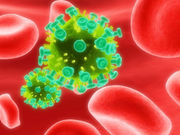HIV-seropositive women have lower HPV-16, higher non-alpha-9 oncHPV prevalence
TUESDAY, March 15, 2016 (HealthDay News) — HIV-seropositive women with cervical intraepithelial neoplasia (CIN) grade ≥3 (CIN3+) are less likely to have human papillomavirus (HPV) 16, according to a study published in the March issue of the American Journal of Obstetrics & Gynecology.
L. Stewart Massad, M.D., from the Washington University School of Medicine in St. Louis, and colleagues screened HIV-seropositive and HIV-seronegative women with CIN3+. Polymerase chain reaction assays were used to detect DNA from more than 40 HPV types in cervicovaginal lavage specimens obtained at the visit during which CIN3+ was diagnosed.
The researchers detected HPV16 in 62 percent of 21 HIV-seronegative women with CIN3+ and in 29 percent of 154 HIV-seropositive women with CIN3+ (P = 0.01). After controlling for covariates, the lower prevalence of HPV16 in CIN3+ among HIV-seropositive women persisted (odds ratio, 0.25; 95 percent confidence interval, 0.08 to 0.78). HIV-infected and uninfected women with CIN3+ had a similar prevalence of other members of the HPV16-related alpha-9 oncHPV clade as a group (odds ratio, 1.02; 95 percent confidence interval, 0.53 to 1.94). For HIV-seropositive versus HIV-seronegative women with CIN3+, the prevalence of non-alpha-9 oncHPV types was increased (odds ratio, 3.9; 95 percent confidence interval, 1.3 to 11.8).
“This is consistent with prior reports that HIV has a weak effect on infection by HPV16 relative to other oncHPV and supports use of nonavalent HPV vaccine in HIV-seropositive women,” the authors write.
Two authors disclosed financial ties to the biopharmaceutical industry.
Copyright © 2016 HealthDay. All rights reserved.








